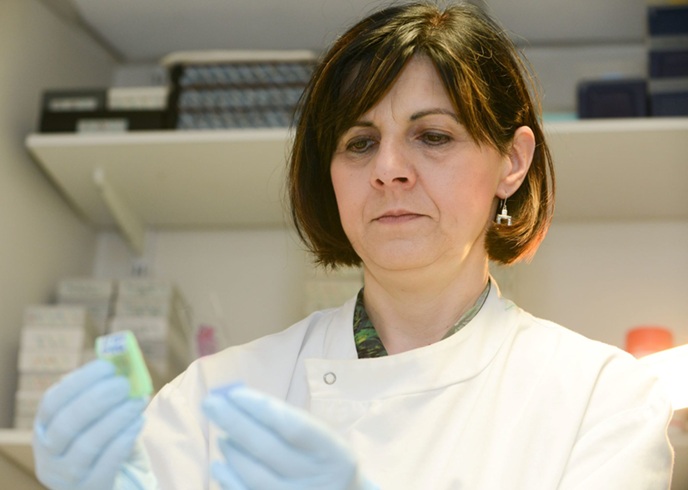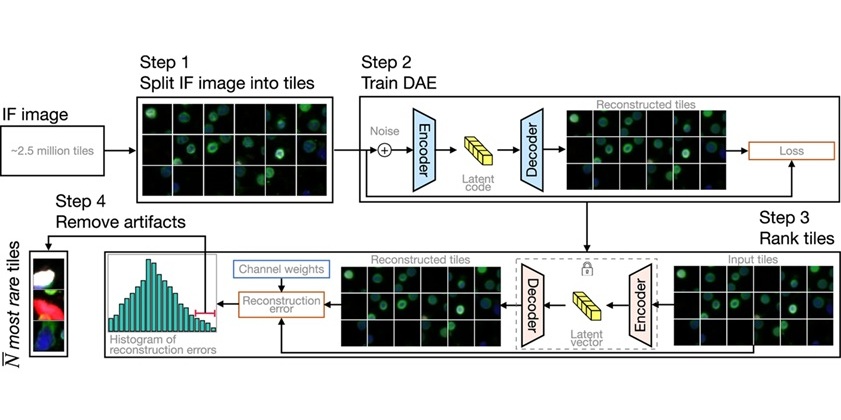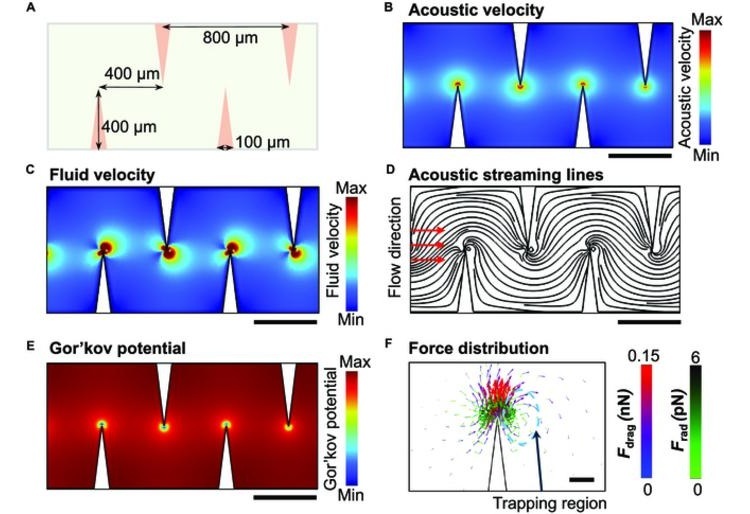Link Confirmed between Living in Poverty and Developing Diseases
|
By LabMedica International staff writers Posted on 30 Sep 2019 |
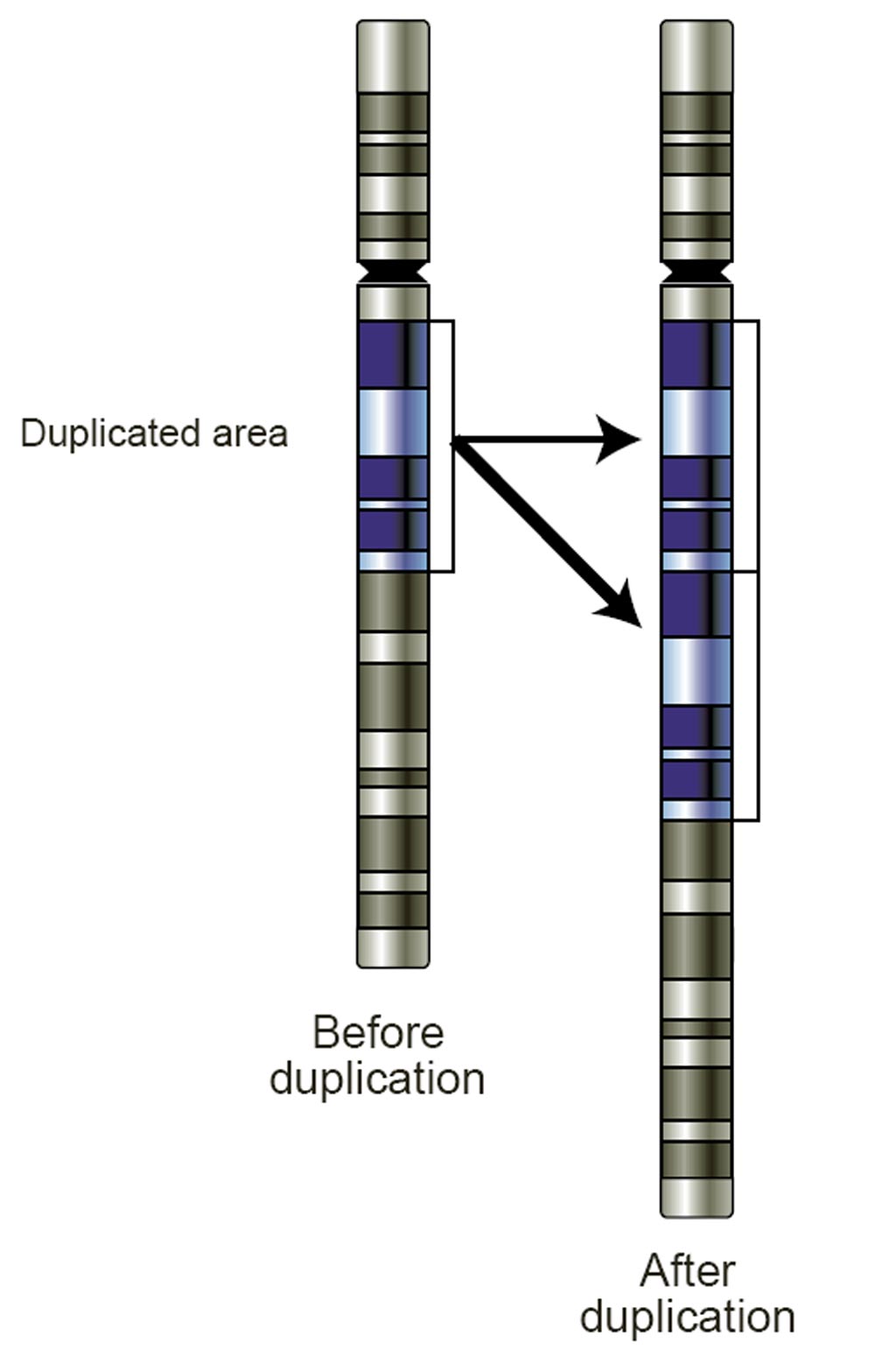
Image: This gene duplication has created a copy-number variation (CNV). The chromosome now has two copies of this section of DNA, rather than one (Photo courtesy of Wikimedia Commons).
A recently published study carried out in the United Kingdom confirmed the existence of a link between economic deprivation and the genetic tendency to develop disease.
It would seem obvious that poverty would go hand in hand with disease. However, scientific proof of this linkage has been lacking. To confirm the relationship, investigators at the University of Manchester (United Kingdom) combined a test population’s Index of Multiple Deprivation Rank (IMDR) with genetic-linked health data.
The IMDR was based on multiple factors including place of residence, household income, education level, and employment status. Genetics-linked health status was based on pathogenic copy number variants (CNVs), which cause hereditary diseases due to the presence and transmission of chromosomes with extra or missing sections of DNA.
The current study included 473 families with individuals with pathogenic autosomal CNVs and known inheritance status. The participants were selected from a database of more than 17,000 DNA samples maintained by the Manchester Centre for Genomic Medicine.
Results of the analysis revealed that the IMDR distribution of families with pathogenic CNVs was significantly different from the general population. Families with inherited CNVs were significantly more likely to be living in areas of higher deprivation when compared with families that had individuals with non-inherited CNVs.
To explain the linkage between residing in areas of economic and social deprivation and the tendency to develop inherited disease, the investigators stated that, "Lower socioeconomic status in families with medically relevant inherited pathogenic and likely pathogenic [genetic changes] with milder phenotype [lower risk of disease] could therefore be due to cumulative multi-generational consequences of these subclinical effects."
The study was published in the September 23, 2019, online edition of the Journal of Medical Genetics.
Related Links:
University of Manchester
It would seem obvious that poverty would go hand in hand with disease. However, scientific proof of this linkage has been lacking. To confirm the relationship, investigators at the University of Manchester (United Kingdom) combined a test population’s Index of Multiple Deprivation Rank (IMDR) with genetic-linked health data.
The IMDR was based on multiple factors including place of residence, household income, education level, and employment status. Genetics-linked health status was based on pathogenic copy number variants (CNVs), which cause hereditary diseases due to the presence and transmission of chromosomes with extra or missing sections of DNA.
The current study included 473 families with individuals with pathogenic autosomal CNVs and known inheritance status. The participants were selected from a database of more than 17,000 DNA samples maintained by the Manchester Centre for Genomic Medicine.
Results of the analysis revealed that the IMDR distribution of families with pathogenic CNVs was significantly different from the general population. Families with inherited CNVs were significantly more likely to be living in areas of higher deprivation when compared with families that had individuals with non-inherited CNVs.
To explain the linkage between residing in areas of economic and social deprivation and the tendency to develop inherited disease, the investigators stated that, "Lower socioeconomic status in families with medically relevant inherited pathogenic and likely pathogenic [genetic changes] with milder phenotype [lower risk of disease] could therefore be due to cumulative multi-generational consequences of these subclinical effects."
The study was published in the September 23, 2019, online edition of the Journal of Medical Genetics.
Related Links:
University of Manchester
Latest BioResearch News
- Genome Analysis Predicts Likelihood of Neurodisability in Oxygen-Deprived Newborns
- Gene Panel Predicts Disease Progession for Patients with B-cell Lymphoma
- New Method Simplifies Preparation of Tumor Genomic DNA Libraries
- New Tool Developed for Diagnosis of Chronic HBV Infection
- Panel of Genetic Loci Accurately Predicts Risk of Developing Gout
- Disrupted TGFB Signaling Linked to Increased Cancer-Related Bacteria
- Gene Fusion Protein Proposed as Prostate Cancer Biomarker
- NIV Test to Diagnose and Monitor Vascular Complications in Diabetes
- Semen Exosome MicroRNA Proves Biomarker for Prostate Cancer
- Genetic Loci Link Plasma Lipid Levels to CVD Risk
- Newly Identified Gene Network Aids in Early Diagnosis of Autism Spectrum Disorder
- Genomic Study Identifies Kidney Disease Loci in Type I Diabetes Patients
- Liquid Biopsy More Effective for Analyzing Tumor Drug Resistance Mutations
- New Liquid Biopsy Assay Reveals Host-Pathogen Interactions
- Method Developed for Enriching Trophoblast Population in Samples
- RNA-Based Test Developed for HPV Detection and Cancer Diagnosis
Channels
Clinical Chemistry
view channel
VOCs Show Promise for Early Multi-Cancer Detection
Early cancer detection is critical to improving survival rates, but most current screening methods focus on individual cancer types and often involve invasive procedures. This makes it difficult to identify... Read more
Portable Raman Spectroscopy Offers Cost-Effective Kidney Disease Diagnosis at POC
Kidney disease is typically diagnosed through blood or urine tests, often when patients present with symptoms such as blood in urine, shortness of breath, or weight loss. While these tests are common,... Read moreMolecular Diagnostics
view channel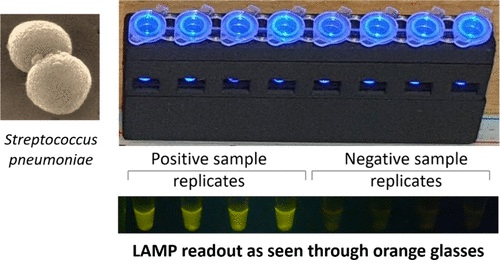
New Diagnostic Method Detects Pneumonia at POC in Low-Resource Settings
Pneumonia continues to be one of the leading causes of death in low- and middle-income countries, where limited access to advanced laboratory infrastructure hampers early and accurate diagnosis.... Read more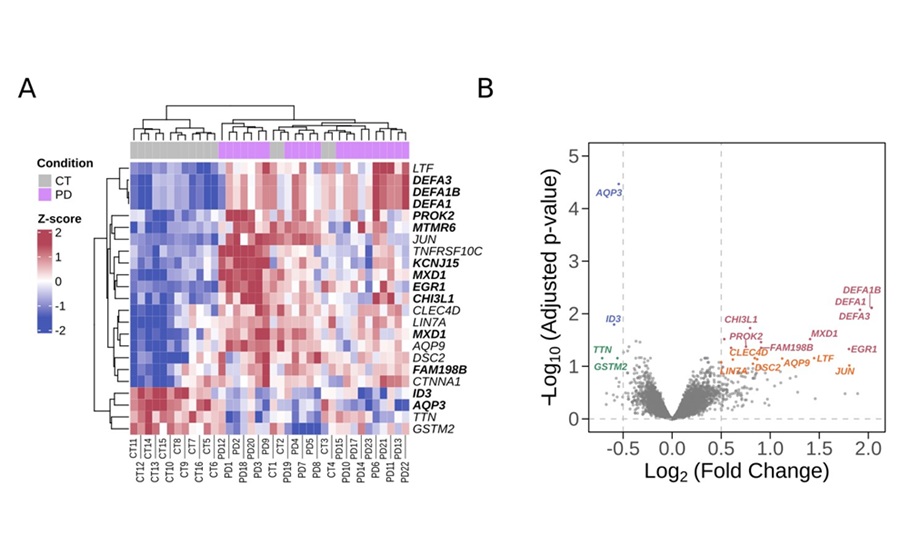
Blood Immune Cell Analysis Detects Parkinson’s Before Symptoms Appear
Early diagnosis of Parkinson’s disease remains one of the greatest challenges in neurology. The condition, which affects nearly 12 million people globally, is typically identified only after significant... Read moreHematology
view channel
ADLM’s New Coagulation Testing Guidance to Improve Care for Patients on Blood Thinners
Direct oral anticoagulants (DOACs) are one of the most common types of blood thinners. Patients take them to prevent a host of complications that could arise from blood clotting, including stroke, deep... Read more
Viscoelastic Testing Could Improve Treatment of Maternal Hemorrhage
Postpartum hemorrhage, severe bleeding after childbirth, remains one of the leading causes of maternal mortality worldwide, yet many of these deaths are preventable. Standard care can be hindered by delays... Read more
Pioneering Model Measures Radiation Exposure in Blood for Precise Cancer Treatments
Scientists have long focused on protecting organs near tumors during radiotherapy, but blood — a vital, circulating tissue — has largely been excluded from dose calculations. Each blood cell passing through... Read moreImmunology
view channel
Blood-Based Liquid Biopsy Model Analyzes Immunotherapy Effectiveness
Immunotherapy has revolutionized cancer care by harnessing the immune system to fight tumors, yet predicting who will benefit remains a major challenge. Many patients undergo costly and taxing treatment... Read more
Signature Genes Predict T-Cell Expansion in Cancer Immunotherapy
Modern cancer immunotherapies rely on the ability of CD8⁺ T cells to rapidly multiply within tumors, generating the immune force needed to eliminate cancer cells. However, the biological triggers behind... Read moreMicrobiology
view channel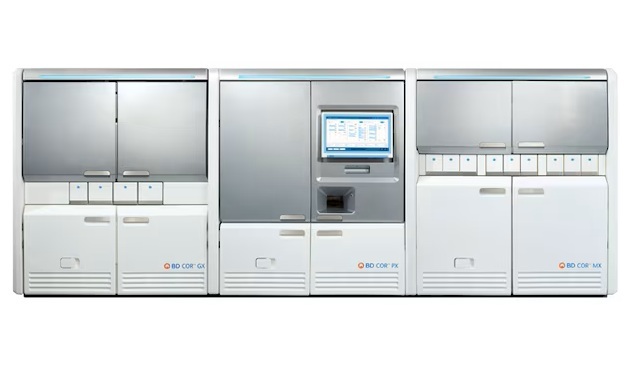
High-Throughput Enteric Panels Detect Multiple GI Bacterial Infections from Single Stool Swab Sample
Gastrointestinal (GI) infections are among the most common causes of illness worldwide, leading to over 1.7 million deaths annually and placing a heavy burden on healthcare systems. Conventional diagnostic... Read more
Fast Noninvasive Bedside Test Uses Sugar Fingerprint to Detect Fungal Infections
Candida bloodstream infections are a growing global health threat, causing an estimated 6 million cases and 3.8 million deaths annually. Hospitals are particularly vulnerable, as weakened patients after... Read morePathology
view channel
New Molecular Analysis Tool to Improve Disease Diagnosis
Accurately distinguishing between similar biomolecules such as proteins is vital for biomedical research and diagnostics, yet existing analytical tools often fail to detect subtle structural or compositional... Read more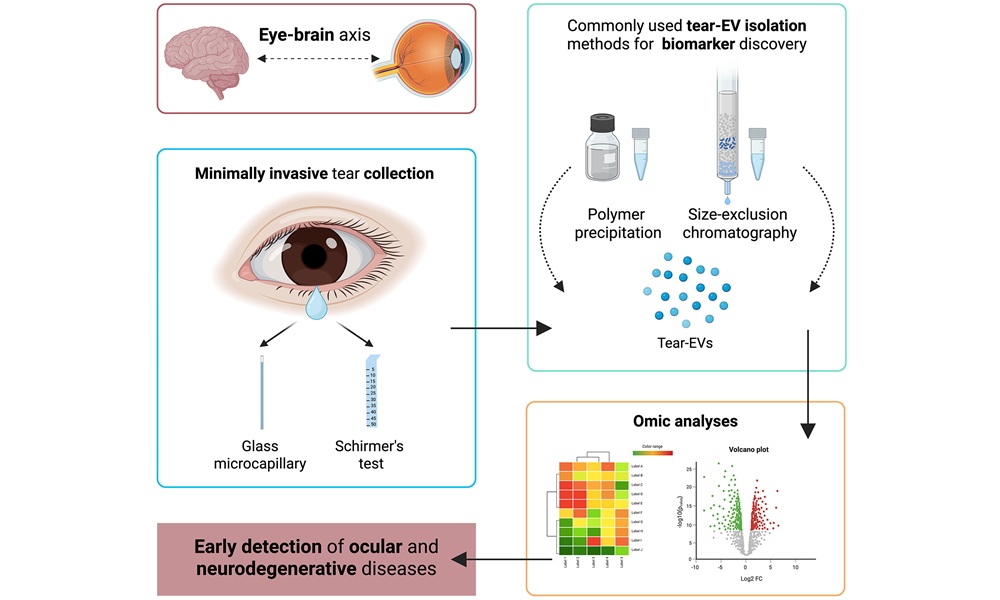
Tears Offer Noninvasive Alternative for Diagnosing Neurodegenerative Diseases
Diagnosing and monitoring eye and neurodegenerative diseases often requires invasive procedures to access ocular fluids. Ocular fluids like aqueous humor and vitreous humor contain valuable molecular information... Read moreTechnology
view channel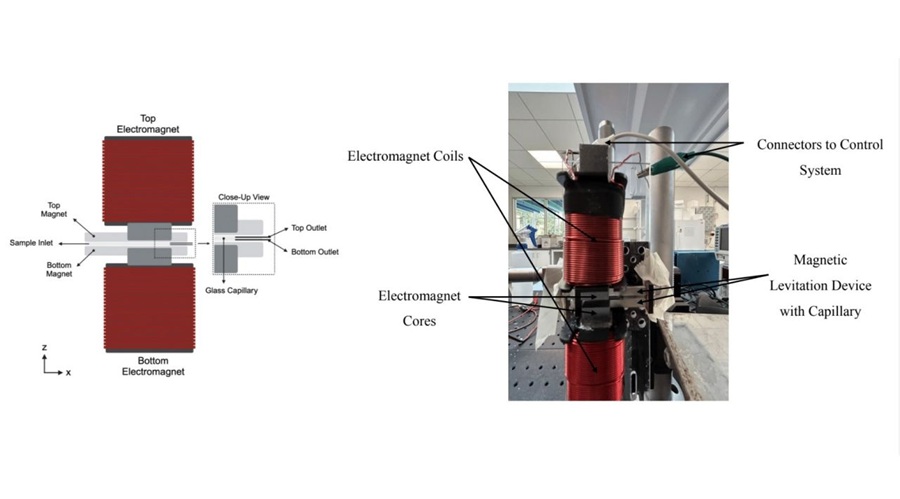
Cell-Sorting Device Uses Electromagnetic Levitation to Precisely Direct Cell Movement
Sorting different cell types—such as cancerous versus healthy or live versus dead cells—is a critical task in biology and medicine. However, conventional methods often require labeling, chemical exposure,... Read more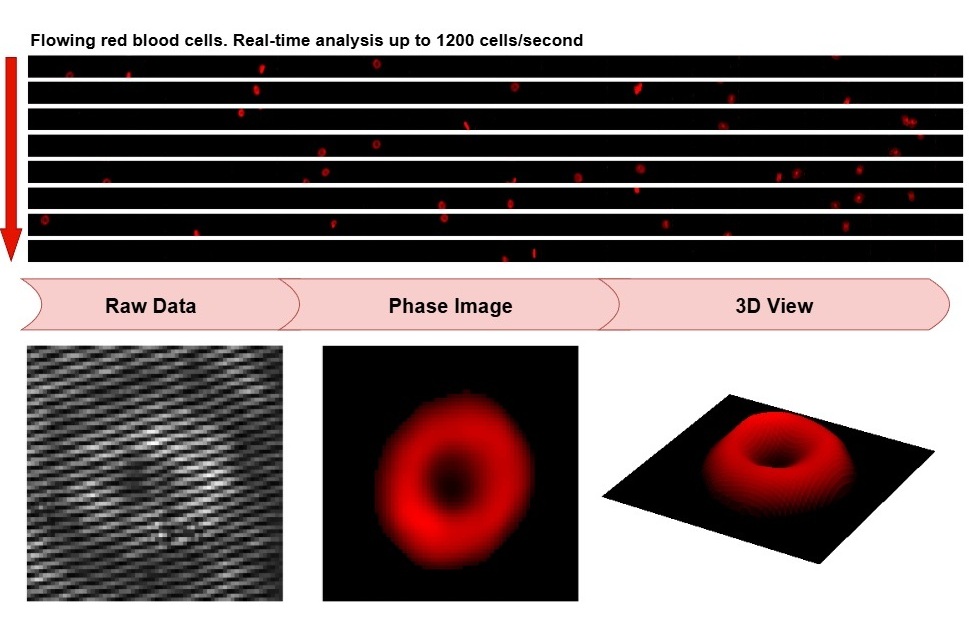
Embedded GPU Platform Enables Rapid Blood Profiling for POC Diagnostics
Blood tests remain a cornerstone of medical diagnostics, but traditional imaging and analysis methods can be slow, costly, and reliant on dyes or contrast agents. Now, scientists have developed a real-time,... Read moreIndustry
view channel
Qiagen Acquires Single-Cell Omics Firm Parse Biosciences
QIAGEN (Venlo, Netherlands) has entered into a definitive agreement to fully acquire Parse Biosciences (Seattle, WA, USA), a provider of scalable, instrument-free solutions for single-cell research.... Read more
Puritan Medical Products Showcasing Innovation at AMP2025 in Boston
Puritan Medical Products (Guilford, ME, USA), the world’s most trusted manufacturer of swabs and specimen collection devices, is set to exhibit at AMP2025 in Boston, Massachusetts, from November 11–15.... Read more
Advanced Instruments Merged Under Nova Biomedical Name
Advanced Instruments (Norwood, MA, USA) and Nova Biomedical (Waltham, MA, USA) are now officially doing business under a single, unified brand. This transformation is expected to deliver greater value... Read more














